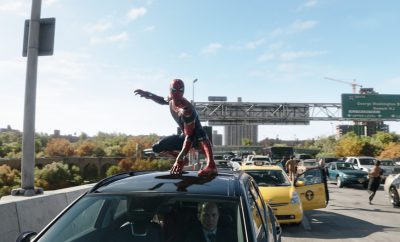
Movies
Movie Review: First Man
“That’s one step for man, one giant leap for mankind.”
“First Man” film takes place during the age of the space race, chronicling Neil Armstrong’s (Ryan Gosling; “Blade Runner 2049,” “La La Land,” “The Big Short” “The Ides of March,” “Drive“) life from being a civilian test pilot to a NASA astronaut and the first man landing on the moon on July 20, 1969.
It is more of a character study and the story is seen from the lens of one man, Neil. It also zooms into his family life. When Neil loses his daughter, a mere two-year-old, to a brain tumor, a part of him dies too. It steely steers him towards NASA and puts him on a sole path towards space.
The film gives a realistic look into the gruelingly dizzying training of astronauts. It’s truly a feat of physical endurance, as well as intellectual and mental capacity. The training introduces Neil to his superiors, Deke Slayton (Kyle Chandler, “The Wolf of Wall Street,” “Zero Dark Thirty,” “Argo,” “Super 8“) and Robert Gilruth (Ciaran Hinds, “The Debt“), and colleagues such as Buzz Aldrin (Corey Stoll, “Ant-Man“), Ed White (Jason Clarke, “Everest“), David Scott (Christopher Abbott), Pete Conrad (Ethan Embry) and Elliott See (Patrick Fugit).
While not all the astronauts survive the test missions and Neil personally feels the impact of the losses, it doesn’t deter him from dedicating himself to his hazardous work and the eventual goal of going to the moon. It does take a toll on his relationships with his wife, Janet (Claire Foy), and their young children – from cohesive and supportive to apprehensive and cold.
At one point, his wife puts her foot down and insists on Neil explaining to their boys that he may never return alive from his moon mission. Stoically, Neil explains the highly risky situation to them matter-of-factly, like speaking at a press conference. Meanwhile, outside of NASA and his family, there are press and politics to deal with. Not everyone is onboard with space explorations; they cost lives and money and the outcome is unknown.
All these elements provide a human perspective into space travel, but nothing compares to the way “First Man” is filmed when it comes to traveling to and being in space. Space travel has typically been portrayed in movies as an alluring adventure, almost with a mystique to it. Filmed from a distance, astronauts coolly stroll in, then a rocket soaring into the skies and gliding gracefully in space. While “First Man” has these depictions, it shatters the over the moon image.
Director Damien Chazelle (“La La Land“) takes a decidedly different approach. “First Man” is the closest you can feel to being strapped inside a spacecraft. Many close-ups of Neil’s face in a helmet show his internal emotions of severe disorientation, fear, relief, calm and awe. Gosling excels in portraying a wide range of expressions with minimalism.
There’s nothing glamorous about being inside a rocket cockpit; it’s cramped chamber and a potential death trap. And wait until it’s airborne – it shakes, rattles, rolls, and spins so turbulently. You’ll feel the terrorizing intensity, velocity, vibration, and sound. It’s a wonder how the human body could survive such perilous voyage.
In space, the sight of a sliver of light and earth surface provide needed respite and tranquility. When the spacecraft finally hovers over the lunar landscape and Neil steps foot on the powdery surface, it’s a hard-earned triumph. The lone human figure and silver moonscape mesmerizingly stand out against the backdrop of the black vastness of the space. The awe-inspiring music that accompanies the journey stops in stark contrast to the silence of the deep space.
“First Man” is an immersive experience, a technical marvel with a poignant payoff.
Copyright (c) 2018. Nathalia Aryani.





1 Comment